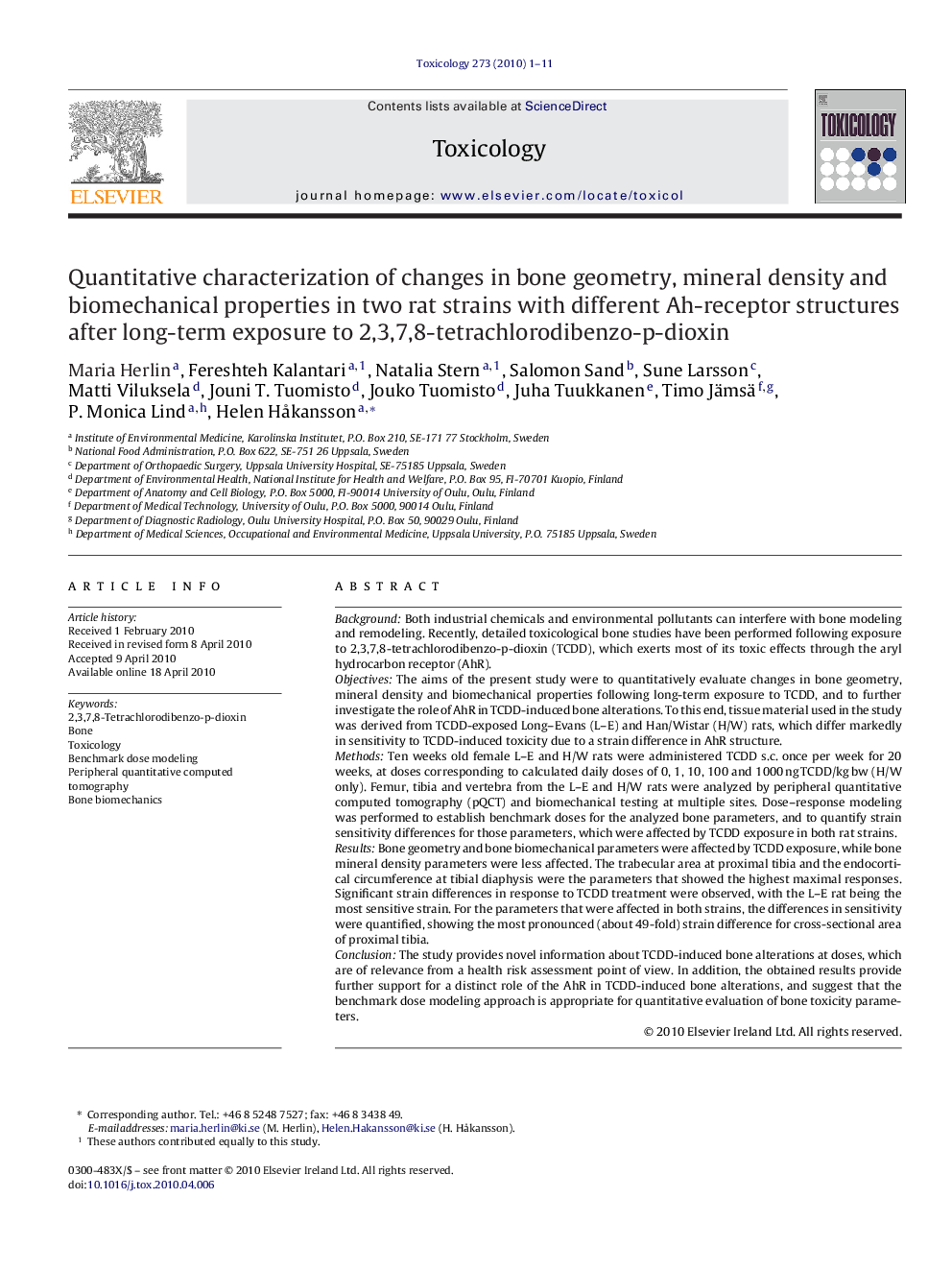| کد مقاله | کد نشریه | سال انتشار | مقاله انگلیسی | نسخه تمام متن |
|---|---|---|---|---|
| 2596346 | 1562383 | 2010 | 11 صفحه PDF | دانلود رایگان |

BackgroundBoth industrial chemicals and environmental pollutants can interfere with bone modeling and remodeling. Recently, detailed toxicological bone studies have been performed following exposure to 2,3,7,8-tetrachlorodibenzo-p-dioxin (TCDD), which exerts most of its toxic effects through the aryl hydrocarbon receptor (AhR).ObjectivesThe aims of the present study were to quantitatively evaluate changes in bone geometry, mineral density and biomechanical properties following long-term exposure to TCDD, and to further investigate the role of AhR in TCDD-induced bone alterations. To this end, tissue material used in the study was derived from TCDD-exposed Long–Evans (L–E) and Han/Wistar (H/W) rats, which differ markedly in sensitivity to TCDD-induced toxicity due to a strain difference in AhR structure.MethodsTen weeks old female L–E and H/W rats were administered TCDD s.c. once per week for 20 weeks, at doses corresponding to calculated daily doses of 0, 1, 10, 100 and 1000 ng TCDD/kg bw (H/W only). Femur, tibia and vertebra from the L–E and H/W rats were analyzed by peripheral quantitative computed tomography (pQCT) and biomechanical testing at multiple sites. Dose–response modeling was performed to establish benchmark doses for the analyzed bone parameters, and to quantify strain sensitivity differences for those parameters, which were affected by TCDD exposure in both rat strains.ResultsBone geometry and bone biomechanical parameters were affected by TCDD exposure, while bone mineral density parameters were less affected. The trabecular area at proximal tibia and the endocortical circumference at tibial diaphysis were the parameters that showed the highest maximal responses. Significant strain differences in response to TCDD treatment were observed, with the L–E rat being the most sensitive strain. For the parameters that were affected in both strains, the differences in sensitivity were quantified, showing the most pronounced (about 49-fold) strain difference for cross-sectional area of proximal tibia.ConclusionThe study provides novel information about TCDD-induced bone alterations at doses, which are of relevance from a health risk assessment point of view. In addition, the obtained results provide further support for a distinct role of the AhR in TCDD-induced bone alterations, and suggest that the benchmark dose modeling approach is appropriate for quantitative evaluation of bone toxicity parameters.
Journal: Toxicology - Volume 273, Issues 1–3, 29 June 2010, Pages 1–11